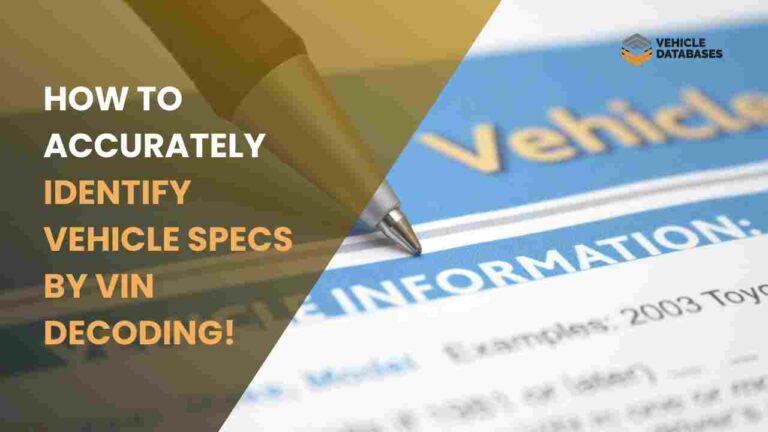As technology continues to transform the automotive industry, usage-based auto insurance has come to stay. Unlike traditional auto insurance policies that rely on fixed premiums, usage-based insurance (UBI) determines coverage based on an individual’s driving behavior.
In this guide, we will take a look at everything you need to know about usage-based auto insurance and also provide solutions for usage-based insurance companies to improve efficiency in their business operations.
What is Usage-Based Insurance?
According to Forbes, between 2013 and 2022, the cost of auto insurance increased by 45.4%, and not everyone is happy with this. One way car owners can try to reduce this cost is with usage-based auto insurance.
The usage-based auto insurance program allows for premiums to be calculated based on the driver’s driving skills and habits. Instead of fixed rates, these programs rely on real-time data to determine how much you pay. The two basic types of usage-based insurance are:
Driving-based UBIs – Here, the best usage-based car insurance company measures driving habits and skills to calculate auto insurance premiums.
Mileage-based UBIs – In mileage-based UBIs, how many miles you drive per day plays a big role. That is, the more distance you cover, the higher your premium, and vice versa.
So, how does it work? Let’s find out!
How Does Usage-Based Auto Insurance Work?
UBI programs collect telematics data from your vehicle, including factors like speed, acceleration, braking, mileage, and time of day. This data is then transmitted to auto insurance companies and they can have an estimate of your driving habits and give you a score.
If you have safe driving habits and you earn a good score, you will be awarded discounts and given a more affordable insurance premium.
Data is tracked through:
- Built-in car systems (e.g., BMW ConnectedDrive or OnStar).
- Plug-in devices (connected to your car’s OBD-II port).
- Smartphone apps (e.g., Allstate Drivewise or Farmers Signal).
- Tags installed on windshields or rear windows.
You may be asked to choose the most comfortable means of tracking data, but if you aren’t comfortable with any option, feel free to discuss alternatives.
Is Usage-Based Car Insurance Worth It?
Usage-based auto insurance is worth it if you are certain that you have safe driving habits and you have low mileage on your vehicle. If you don’t, you may not stand a chance of getting cheap insurance. You could even get a higher rate! It’s funny, but true.
According to a TransUnion survey, only 48% of car owners had their car insurance rates reduced. About 30% said their rates remained the same and 18% said they had their premiums increased. The last set of people mentioned that they didn’t know if their premiums had changed.
Are you sure of your driving skills? If you are, you can try this out and save some money while you’re at it. Now, the next section talks about the benefits of usage-based auto insurance and how this insurance program can help you become a safe driver and save some costs!
Which Insurance Companies Offer Usage-Based Insurance?
Here are some insurance companies and their offers:
Insurance Company | Type of UBI Program | Insurance Discounts Offered |
Nationwide | Distance- and mileage-based UBI | Varies based on driving habits |
Progressive | Snapshot (plug-in device or mobile app) | Discounts based on driving data |
Allstate | Drivewise | Savings through usage-based statistics |
Liberty Mutual | RightTrack | Small discount upon enrollment |
State Farm | Drive Safe & Save | Discounts up to 30% |
Benefits of Usage-Based Insurance Programs
Usage-based programs, also known as pay-as-you-drive or telematics insurance, offer several benefits for both drivers and insurance companies alike. They are:
Cost Savings
One of the primary advantages of usage-based auto insurance is cost savings. Unlike traditional insurance policies where premiums are based on generalized factors such as age, gender, and location, usage-based insurance calculates premiums based on actual driving behavior.
Safer drivers who exhibit responsible driving habits, such as obeying speed limits, avoiding sudden braking, and driving during safer times of the day, can enjoy lower premiums. This incentivizes drivers to adopt safer driving practices, which can ultimately lead to reduced accident rates and associated costs.
Fairness and Personalization
Usage-based insurance takes into account individual driving habits and patterns, leading to a fairer and more personalized insurance premium. Instead of being grouped into broad risk categories, drivers are assessed based on their specific behaviors behind the wheel.
This means that safe drivers are rewarded with lower premiums, while those with riskier driving habits may face higher auto insurance rates, encouraging them to improve their driving behavior.
Encourages Safer Driving
Using usage-based insurance encourages safer driving practices by providing feedback and insights into driving behavior. Knowing that their driving is being monitored can prompt individuals to be more mindful of their behavior on the road, leading to reduced instances of speeding, harsh braking, and other risky behaviors. Over time, this can contribute to a decrease in accidents and fatalities on the road.
Customized Coverage
Usage-based insurance allows for more customized coverage options. Drivers can choose policies and coverage levels that align with their individual needs and driving habits. For usage-based insurance examples example, occasional drivers who use their cars infrequently may opt for a pay-per-mile policy, while others may prefer policies tailored to specific driving times or distances.
Accident Response and Assistance
Many usage-based insurance programs offer additional features such as accident response and roadside assistance. In the event of an accident or emergency, drivers can access immediate assistance through their insurance provider, ensuring prompt support when needed most.
How Telematics Technology Monitors Your Driving Habits
Telematics technology, the backbone of usage-based auto insurance (UBI), utilizes devices installed in vehicles or mobile apps to collect data on driving behavior. These devices capture various metrics, including speed, acceleration, braking intensity, mileage, time of day, and even location. Here’s how telematics technology monitors driving habits:
Data Collection: Telematics devices continuously gather data during each trip, recording various aspects of driving behavior.
- Analysis: The collected data is then analyzed to assess driving habits and risk levels. Insurers use algorithms to evaluate factors such as speed, acceleration, braking patterns, and adherence to traffic laws.
- Feedback: Feedback is provided to drivers based on their driving performance. This may come in the form of regular reports, notifications, or access to a dashboard where drivers can view their driving scores and insights.
With improvements in technology – electric cars and telematics, the insurance industry is being revolutionized. Do you know one more piece of technology that could take insurance companies to a whole new level? APIs – Application Programming Interfaces!
Now that you have all the information you need to get yourself the insurance your car needs. Where do you start from? The next section outlines the steps you can follow to get the best services.
Steps to Enroll in a UBI Program
Enrolling in a usage-based insurance program typically involves the following steps:
- Research: Start by researching insurance companies that offer UBI programs. Look into their offerings, coverage options, and reputation. You can start with some of the companies mentioned above.
- Contact Insurer: Reach out to your chosen insurer to inquire about their UBI program. Ask about eligibility requirements, device installation, and how driving data is collected and used.
- Device Installation: If required, schedule an appointment to have a telematics device installed in your vehicle or download the insurer’s mobile app.
- Drive and Monitor: Once the device is installed or the app is set up, start driving as usual while the telematics technology monitors your driving habits.
Based on your driving behavior, your auto insurer will adjust your premiums accordingly. Enjoy potential cost savings for safe driving practices.
The Insurance company is not stopping at telematics programs. The industry is now exploring the use of APIs in their services. Keep reading to find out more!
The Use of Vehicle Data APIs in the Insurance Industry
As technology advances, the insurance industry is gaining access to accurate data insights like never before. One great step in advancement is the introduction of APIs. APIs take data collection to a different level! Alongside telematics and real-time data, insurance companies can decode Vehicle Identification Numbers (VINs) and view historical records, damages, verify mileage, and more, with only a few clicks.
With detailed information about the condition and specifications of a vehicle, insurance companies can prepare more accurate premiums and save time that would have been spent gathering vehicle information. All they need to do is integrate an API, call it whenever they need, and get the required data.
Where can APIs be gotten? Vehicle Databases!
One of the most Vehicle Databases is a well known vehicle data API provider. Their APIs are easy to integrate and provide access to vehicle information, specifications, and records in a few seconds. Here are some of the APIs we provide:
- OCR API Services
- VIN Decoding API
- Classic VIN decoder API
- Vehicle specification API
- Vehicle market value API
- Vehicle services API
- License plate API
- Auction history API
- Sales history API
- VIN Title Check API
- Vehicle media API
- Window sticker API
- Electric vehicle specifications API
Don’t get left out and stuck in the past! Upgrade your insurance company with APIs today and get accurate vehicle information – including hidden records – in seconds.
Frequently Asked Questions
In simple terms, usage-based auto insurance works by tracking your driving. The insurance provider uses telematics technology to monitor driving behavior, such as speed, acceleration, and braking. Insurers use this data to calculate premiums based on actual driving habits, potentially offering discounts for safer driving.
Pay-per-mile car insurance charges drivers based on the number of miles they drive, while usage-based insurance assesses driving behavior to determine car insurance premiums. Pay-per-mile focuses solely on mileage, whereas usage-based considers various factors like speed and braking. Verify from your provider what insurance plan your auto policy covers before signing up.
Usage-based insurance has gained popularity in recent years as drivers seek more personalized and potentially cost-effective coverage options. Many insurance companies now offer usage-based programs to cater to this demand. Be sure to understand the insurance company’s car insurance policy before signing up for a UBI.
Insurance per mile can be worth it for drivers who don’t drive frequently or have low mileage. It offers a more tailored approach to coverage, potentially leading to cost savings for those who drive less often. However, its worthiness depends on individual driving habits and needs.


